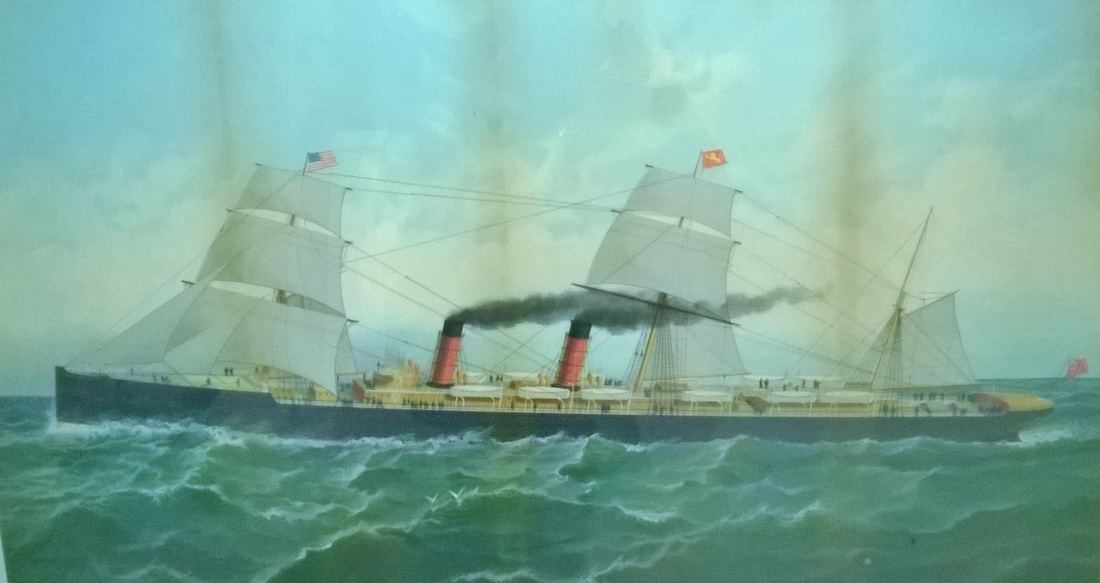The ship is a three masted twin funnelled steamer dating back to the 19th century. I could not see a name on the vessel and at first thought it might not be a real ship but based on the fact she is flying the red ensign at the stern, with the American flag on her first mast with a orange flag with a yellow or gold lion on the second mast I thought I would undertake some research to try and identify her.
The shipping line flag was identified as being Cunard line which helped immensely and it was not long before her identity became apparent.
She is the Cunard steamer Servia which was built in 1881 by J& Thomson Ltd, Glasgow in 1881. Of 7,391 gross tons she was 532 feet long, 52 feet wide with compound engines and a single screw propeller. Her service speed was 17 knots (although on sea trials she made 17.8 knots) and she could accommodate 1,050 passengers (450 first class and 600 third class) in addition to 200 crew.
Passenger areas were elegant and her main dining salon was 74 feet long and 49 feet wide and could seat 350 passengers. She also had suites with double beds, dressings areas and wardrobes.
Her three masts had a full set of square sails, fore and aft sails and headsails.
Servia was the first Cunard vessel to be built of steel and to have electric illumination.
She undertook her maiden voyage from Liverpool to New York on 26 November 1881 and undertook 171 round trips across the Atlantic before being retired and sold after 20 years service to the Thomas Ward Scrap Yard in Preston to where she was towed and dismantled.

 RSS Feed
RSS Feed
